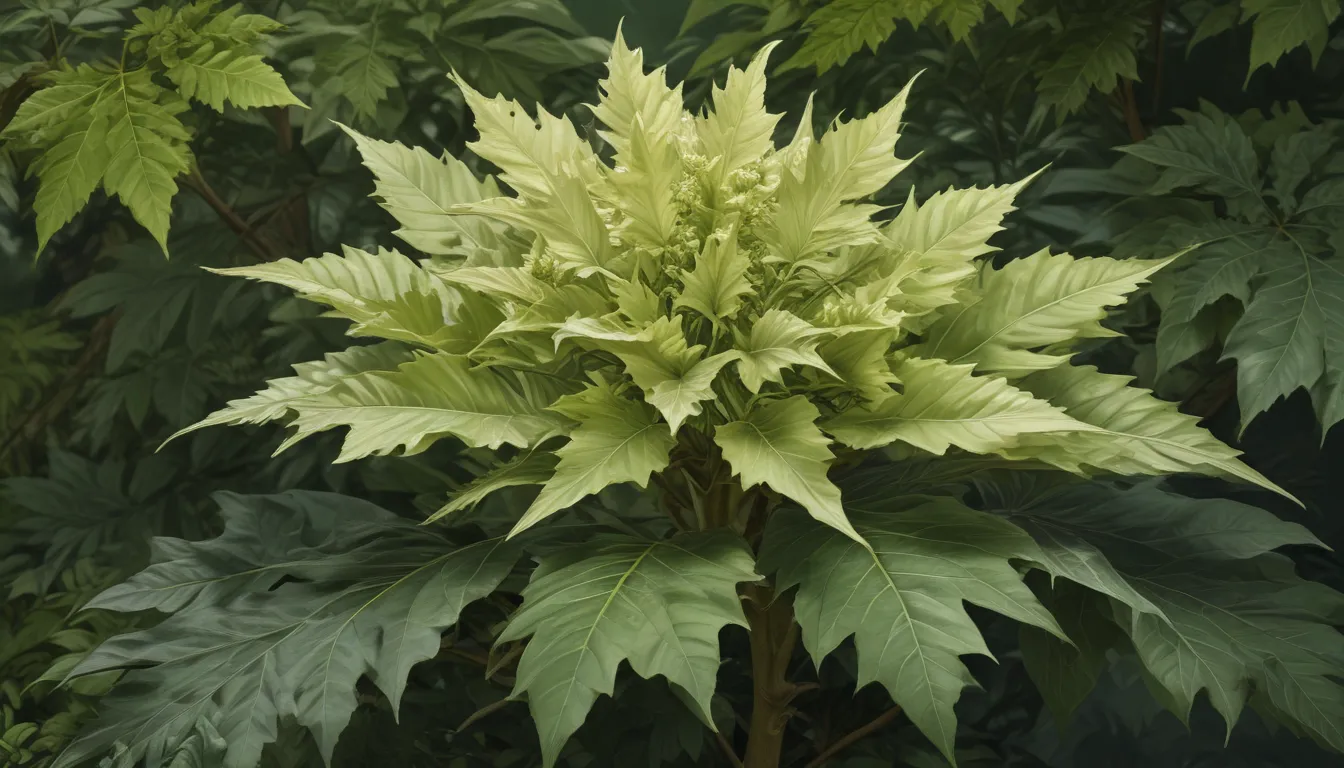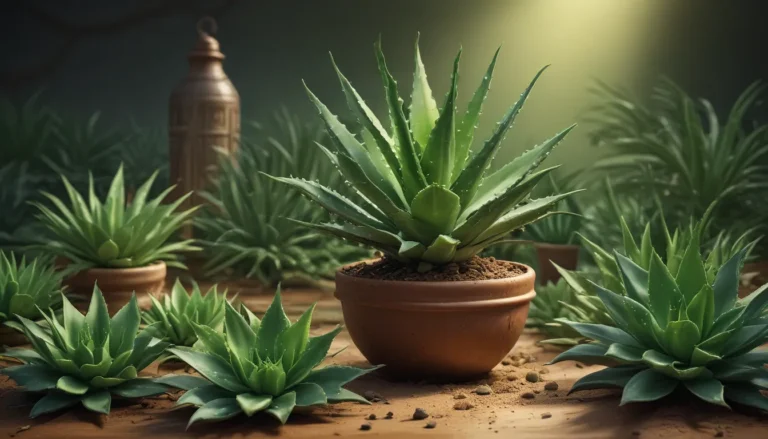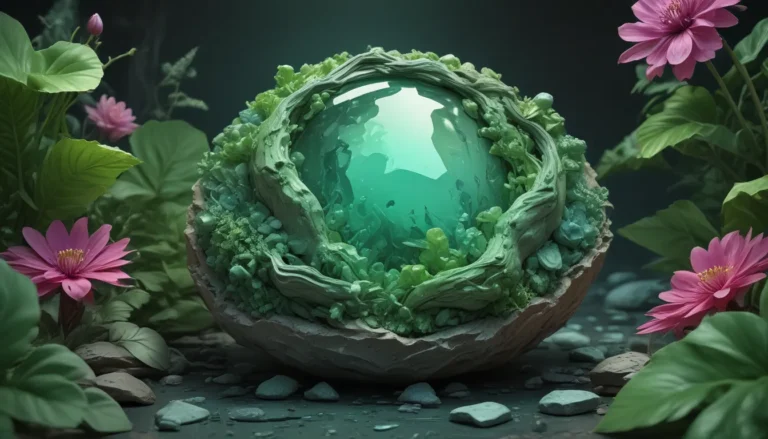The pictures we use in our articles might not show exactly what the words say. We choose these pictures to make you interested in reading more. The pictures work together with the words but don’t take their place. The words still tell you the important facts.
Are you intrigued by the captivating allure of Fatsia japonica, also known as the Japanese aralia? This fascinating plant hailing from Japan and Korea has stolen the hearts of many with its striking appearance and versatile nature. In this comprehensive guide, we will delve into 15 remarkable facts about Fatsia japonica that will unveil its hidden wonders and leave you in awe. Whether you are a seasoned plant enthusiast or a newcomer to the world of botanical beauty, prepare to be inspired as we explore the enchanting realm of Fatsia japonica.
Discovering the Origins of Fatsia Japonica
Diving into the roots of Fatsia japonica, we uncover its native habitat in Japan and South Korea. Nestled in the forests of these countries, this evergreen shrub thrives in both mountainous regions and coastal areas, showcasing its adaptability to diverse environments.
Embracing the Araliaceae Family
As a member of the esteemed Araliaceae family, Fatsia japonica shares its lineage with other renowned ornamental plants like ivy, ginseng, and schefflera. This botanical family is renowned for its varied foliage and distinct growth habits, contributing to the rich tapestry of plant life.
The Allure of Glossy Leaves
A defining feature of Fatsia japonica is its large, glossy leaves that exude elegance and charm. With leaves reaching up to 12 inches in diameter and boasting a deep green hue and lustrous texture, this plant adds a touch of sophistication to any indoor or outdoor space.
Fatsia Japonica in Landscaping
Renowned for its attractive foliage and ease of care, Fatsia japonica has become a popular choice in landscaping projects. Whether as a focal point in gardens, a border plant, or a potted specimen adorning patios and balconies, this versatile plant brings beauty and tranquility to any setting.
Thriving in Shade
Unlike many plants that crave sunlight, Fatsia japonica thrives in partial to full shade conditions, making it a versatile choice for areas with limited sunlight. Its adaptability to shade opens up new possibilities for incorporating this plant into various outdoor spaces.
Captivating Floral Displays
In the late fall and early winter, Fatsia japonica graces us with unique spherical clusters of small white flowers, adding a delicate touch to its overall aesthetic appeal. While not the main focal point of the plant, these flowers contribute to its charm and visual interest.
A Bounty of Berries
Following the bloom of flowers, Fatsia japonica yields small, black berries that transition from green to black as they ripen. While not intended for human consumption, these berries serve as a feast for birds and wildlife, enriching your garden ecosystem.
Evergreen Beauty
Embracing its status as an evergreen plant, Fatsia japonica retains its lush foliage year-round, ensuring a verdant backdrop in your garden or indoor space even during the winter months. This enduring greenery adds a sense of vitality and tranquility to your surroundings.
The Gift of Low Maintenance
For those seeking a plant that requires minimal care and attention, Fatsia japonica emerges as a top choice. Known for its resilience and ability to thrive in various conditions, this low-maintenance plant is ideal for busy gardeners and beginners alike.
Versatile Indoor and Outdoor Growth
Whether adorning your living space or enhancing your outdoor landscape, Fatsia japonica offers the flexibility to thrive both indoors and outdoors. Whether as a potted plant indoors or a garden specimen, this plant adapts to different environments with ease.
Cultivating Good Luck
In Japanese folklore, Fatsia japonica is revered for its association with good luck and prosperity, making it a popular gift during housewarmings and celebratory occasions. Embrace the positive energy and auspicious charm of this remarkable plant in your home.
A Natural Deer Deterrent
If deer frequent your garden, Fatsia japonica serves as a natural deterrent with its leathery leaves that are less enticing to these animals. Protect your plants and enjoy their beauty without the worry of deer damage.
Therapeutic Traditions
Delving into the realm of traditional medicine, various parts of Fatsia japonica are revered for their potential therapeutic properties. From anti-inflammatory benefits to immune-boosting effects, this plant holds a place in herbal remedies for its healing potential.
Growing Tall and Beautiful
Under optimal conditions, Fatsia japonica can reach impressive heights of up to 6 feet, showcasing its robust growth and striking presence. Pruning can help maintain a desired size while allowing the plant to flourish in all its glory.
Purifying the Air
Beyond its aesthetic charms, Fatsia japonica is celebrated for its air-purifying abilities, helping to remove toxins and improve indoor air quality. Embrace a healthier living environment with this natural purifier by your side.
Conclusion: Nurturing Nature’s Beauty
In conclusion, Fatsia japonica stands as a testament to nature's beauty and resilience, offering a host of benefits to those who embrace its presence. Whether you seek a decorative accent, a symbol of good fortune, or a therapeutic ally, this captivating plant delivers on all fronts, enriching your life with its grace and versatility.
FAQs: Unveiling More Insights
-
Can Fatsia japonica be grown indoors?
Yes, Fatsia japonica thrives indoors and adapts well to lower light conditions, making it an ideal houseplant. -
What is the typical height of Fatsia japonica?
Fatsia japonica can grow up to 6 to 10 feet tall when planted in the ground, slightly smaller in containers. -
Does Fatsia japonica require high maintenance?
Fatsia japonica is a low-maintenance plant, tolerating various soil conditions and requiring minimal care. -
Is Fatsia japonica toxic to pets?
Yes, Fatsia japonica is toxic to certain pets if ingested, so caution is advised to keep it out of reach. -
Can Fatsia japonica withstand colder climates?
Fatsia japonica is hardy in USDA zones 8-11 but can survive lower temperatures with proper protection. -
How fast does Fatsia japonica grow?
Known for its rapid growth, Fatsia japonica can grow up to 2-3 feet per year under ideal conditions. -
Can Fatsia japonica be propagated from cuttings?
Yes, Fatsia japonica can be propagated from stem cuttings, offering a simple and rewarding method of propagation.
Immerse yourself in the awe-inspiring world of Fatsia japonica, where beauty meets resilience and nature whispers its secrets through every leaf and flower. Embrace the journey of discovery and growth as you cultivate this remarkable plant in your garden or indoor oasis. Let the enchanting allure of Fatsia japonica elevate your surroundings and bring a touch of elegance to your life.






